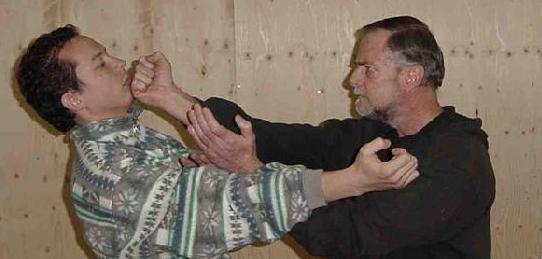
3 Reasons Not to Spar
October 21, 2016
Be quick to end the fight.
Wing Chun Kuen Kuit
Among some fight enthusiasts, its considered an indisputable fact that if you want to be a good fighter, you must spar.
Of course, different people mean different things by this idea of “sparring,” ranging from from the lightest contact that is practically shadowboxing to training with gloves that results in the occasional accidental knockout.
As usual with training, what we really need to do before we get going is consider our goals versus the downsides.
What do you want? How bad do you want it? Can you make some trade-offs and get most of the way there?
Consider these three points.
#1 CTE
The recent science surrounding CTE (chronic traumatic encephalopathy) in football and boxing show pretty clearly that you are taking a bit of a risk when you engage in activities where your head gets hit repeatedly. Every hit could reach a potential harvest of personality degradation. Are you a pro fighter or planning to become one? Even many pros are avoiding full contact in training these days. And there is evidence that more brain injuries happen in training than in matches (which makes sense, since you train way more than you actually fight in the ring).
I’m not certain about the odds involved here. We have all seen cases but they seem to be a small percentage. Still, who wants a sort of induced dementia?
Maybe there is hope — check out this device (inspired by the way woodpecker’s protect their brains from CTE by wrapping their long tongues around their head and neck).
#2 Its Still Not “Real” and May Mess Up Your Quality of Life
If you aren’t training for the ring, then you should really consider carefully many of your training decisions. A lot of amateur fighters (and by amateur, I mean never plan to get into a ring) still get so caught up in the training cycle they cause themselves the sort of injuries which debilitate pros. Chronic tendon injuries. Injuries to cartilage and other connective tissue. Brain injuries, as above. Wing Chun was designed to enable you to become a proficient fighter without these problems. The fighters who helped evolve our system came up with sayings like “to be fast, train slow.” They invented Chi Sao (a way to train reflexes without hitting one another). Despite it being a system dedicated to striking the head and training limb destruction, I’ve only seen one really debilitating injury in 16 years of training, and that was due to carelessness and hubris.
#3 For Wing Chun Fighters, Sparring May Create Bad Habits
For me, this is the kicker. Wing Chun’s fighting strategy is an instant and relentless attack which is meant to be over very quickly. We basically don’t back up or stop. But sparring will teach you to hover outside and rush in, then back out. Sparring by its very nature is like this. Wing Chun doesn’t want to break contact with the opponent at all. People who spar are always playing in and out of the various ranges. They do a lot of feinting, because feinting is a luxury. Wing Chun does not feint. People also devolve to this approach in Chi Sao. This is a mistake. Wing Chun is a short blast system. This is why its not very useful to help you win slap fights with your friends. It will help you a great deal if you decide to knock your friend out! Wing Chun chases the target into the grave!
How do we learn to fight without “sparring?”
That’s why Chi Sau/ Gwoh Sau were invented!
Of course, despite all of the above, I agree that the best way to become a good fighter is to fight and the closer you can scoot up to the line of a real no-holds-barred fight in your training or experience, the better. The question is, what are you willing to sacrifice to become a good fighter? The further you go to the main event, the more you risk teeth, concussion, and other sorts of serious damage. My approach is to become the best I can be short of catching any real damage, understanding this entails accepting the limitations of this approach.
